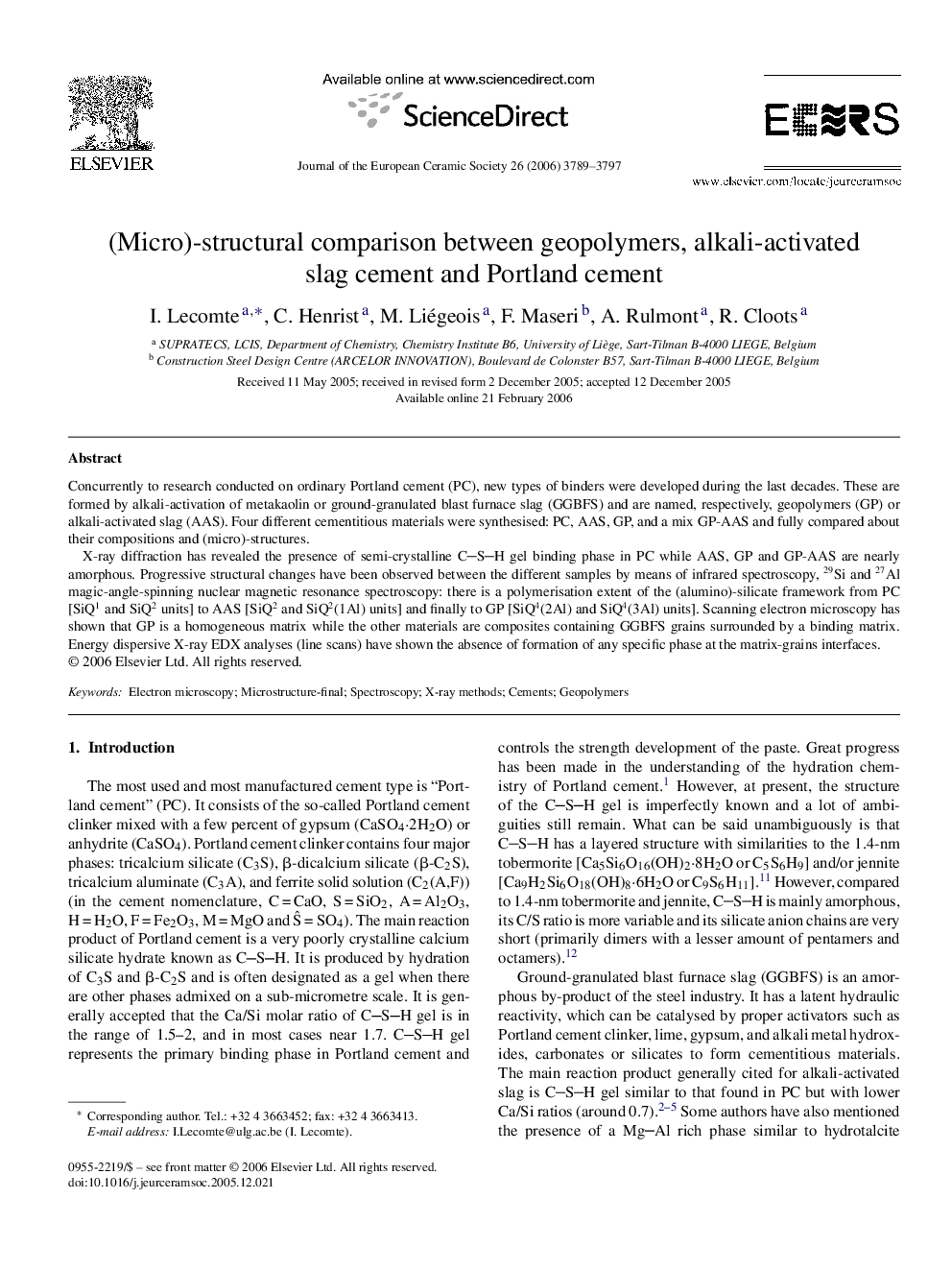| Article ID | Journal | Published Year | Pages | File Type |
|---|---|---|---|---|
| 1477137 | Journal of the European Ceramic Society | 2006 | 9 Pages |
Concurrently to research conducted on ordinary Portland cement (PC), new types of binders were developed during the last decades. These are formed by alkali-activation of metakaolin or ground-granulated blast furnace slag (GGBFS) and are named, respectively, geopolymers (GP) or alkali-activated slag (AAS). Four different cementitious materials were synthesised: PC, AAS, GP, and a mix GP-AAS and fully compared about their compositions and (micro)-structures.X-ray diffraction has revealed the presence of semi-crystalline CSH gel binding phase in PC while AAS, GP and GP-AAS are nearly amorphous. Progressive structural changes have been observed between the different samples by means of infrared spectroscopy, 29Si and 27Al magic-angle-spinning nuclear magnetic resonance spectroscopy: there is a polymerisation extent of the (alumino)-silicate framework from PC [SiQ1 and SiQ2 units] to AAS [SiQ2 and SiQ2(1Al) units] and finally to GP [SiQ4(2Al) and SiQ4(3Al) units]. Scanning electron microscopy has shown that GP is a homogeneous matrix while the other materials are composites containing GGBFS grains surrounded by a binding matrix. Energy dispersive X-ray EDX analyses (line scans) have shown the absence of formation of any specific phase at the matrix-grains interfaces.
